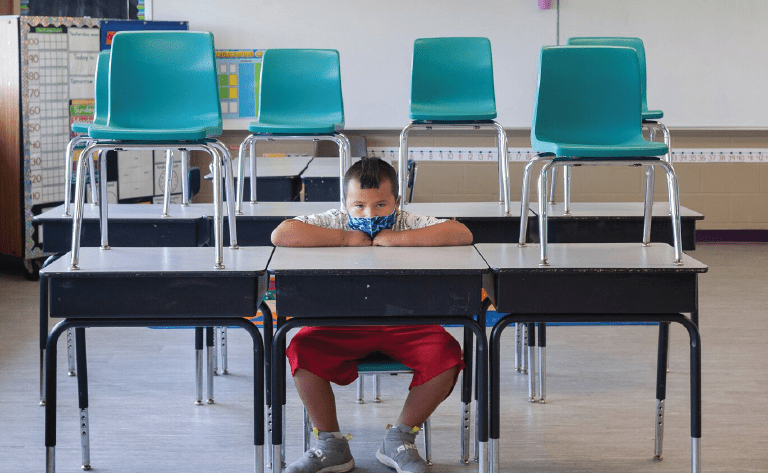Most of us remember having first-day-of-school jitters, but few of us have gone through what today’s students have experienced in the last two years. Students have endured illness and economic hardship, witnessed racial injustice, faced inadequate access to computers, the internet, and safe and quiet places to learn, uneven instruction, and more. As a result, many students have fallen behind grade level. Student achievement data from winter of the 2020-21 school year, collected by Curriculum Associates, indicates that after 12 months of interrupted learning due to the pandemic, fewer students in schools serving mostly Black or Latino students are on grade level compared to those in schools serving mostly White students, and all students need social-emotional support.
To provide for America’s most underserved students — many of whom experienced systemic barriers to high-quality education long before this pandemic — state, district, and school leaders need to invest in targeted evidence-based interventions and opportunities to support and accelerate learning, both for high-achieving students who have not had the opportunity to engage in more rigorous curricula and the many students who are experiencing unfinished learning.
Ed Trust and MDRC’s unfinished learning briefs highlight evidence-based strategies that schools and districts can use to ensure students are receiving the opportunities and supports they need to get back on grade level after school interruptions. The research suggests that targeted intensive tutoring and expanded learning time would help students who haven’t had the opportunity to master content, get that chance while also learning new content. Truthfully, students should have had access to these supports before the pandemic. They should have access to educators trained in building and maintaining strong relationships and integrating activities that recognize the experiences of students as assets instead of deficits. Without strong relationships and connections between students and school staff, educators cannot help students catch up; and without building on the skills and heightened community awareness students have developed over the past year, we cannot meet the social-emotional needs of this generation of students.
The American Rescue Plan Act (ARP) provides more than $125 billion for K-12 education and requires that states and school districts use at least 5% and 20% of the funding they receive respectively to implement evidence-based interventions to address unfinished instruction and the disproportionate impact of COVID-19 on the nation’s most underserved students. This is an opportunity for schools across the country to finally get equity right for the students who face the most injustices. This is also an opportunity for advocates and families to work with district and school leaders to ensure that they do.
What’s next for state and district leaders?
Once school leaders have the ARP funding in hand, they can give students the support and opportunities they need to succeed.
State and school leaders must make crucial decisions on how to implement strategies equitably, where to invest resources, and how to balance tradeoffs between effectiveness, affordability, and feasibility.
As a condition of receiving these federal funds, states are required to submit their plans for use of these funds. Some states are committing to using their funds to create or expand existing statewide efforts to accelerate student learning for the states’ most underserved students. Some states have submitted promising plans.
For example, Tennessee is using ARP funds to address unfinished learning through targeted intensive tutoring. The state has created a program called TN ALL Corps that requires students to be placed in small groups (3:1 ratio), for 30-45 minutes a day, a few times a week. The department will also offer significant needs assessment and planning support for districts to ensure that they maximize tutoring opportunities for underserved or prioritized student groups. All Tennessee districts will be required to complete a needs assessment to determine which students were disproportionately impacted by COVID-19. Meanwhile, Massachusetts has developed an “Acceleration Roadmap,” which offers guidance on an equitable framework through acceleration academies, summer school matching grants, summer acceleration to college summer step-up programs. The state has set a goal to implement these programs in ways that affirm the race, identity, home language, and unique abilities of students.
What’s next for parents and advocates?
While some state and district leaders appear to be ready to meet the needs of each student, some will need an extra push from families and advocates to ensure funds are used to support equitable and evidence-based strategies. The Education Trust has created a letter to send to district and state leaders to ensure they are doing just that.
If you are a parent or advocate concerned that you haven’t heard much about your school district’s plan, you are not alone. It is also not too late to engage your district leaders around next steps. (Read 7 Questions to Ask Your District Leader About Where ARP Funds Are Going) You can find out how much money the federal government is sending to your state using the map found here, and many states have published estimates of how much money each school district will receive. And you can find your state’s plan for those funds here.







